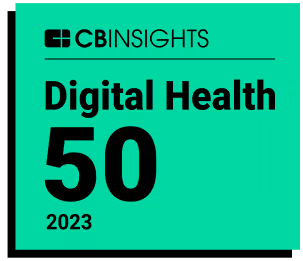One of the key challenges that value-based care (VBC) presents to healthcare providers and health plans is the need to navigate a changing regulatory landscape.
In value-based care, risk adjustment is a critical tool for ensuring that providers are adequately compensated for the care they deliver. So, when there are changes to the ways risk adjustment factor (RAF) scores are calculated and to the rules governing compensation, organizations need to adjust their approaches accordingly. That can be a challenging and time-consuming process – but a critical one nonetheless for those looking to thrive in the value-based world.
The latest such developments facing risk-bearing provider groups and health plans in the U.S. are the transition from CMS-HCC V24 to V28 and the Inflation Reduction Act of 2022 (IRA).
To offer insights into the changes that healthcare providers need to make in the face of these challenges, we recently teamed up with RISE Health to offer an informative webinar titled The Shifting Landscape of Value-Based Care: How Payers & Providers Can Navigate the Regulatory Curve, moderated by Dana McCalley, Navina’s VP of Value-Based Care. Here are some key takeaways for healthcare provider groups to keep in mind.
V28, the Inflation Reduction Act, and their impact on provider groups
Both HCC V28 and the IRA significantly change how healthcare providers are compensated for the care they deliver, but in very different ways. It’s important for provider groups to have a sense of the ramifications of both shifts so that they can adapt effectively. The webinar opened with an informational briefing by Noam Keesom, Navina’s Head of Strategy.
The CMS-mandated shift from the HCC V24 to V28 risk adjustment model changes how Medicare Advantage plans (Medicare Part C) are reimbursed by CMS, in turn affecting how these plans compensate providers. In addition to altering the codes that are used for many diagnoses, V28 also assigns different weighting to many conditions. It also adds and removes certain diagnoses from the list of conditions factored into risk adjustment, resulting in a significant drop in the number of ICD-10 codes that map to HCC codes. Importantly, the transition is taking place gradually, requiring healthcare providers to work with a changing blend of both V24 and V28 HCC codes in the meantime.
Meanwhile, the Inflation Reduction Act will have a significant impact on health plans, providers, and payers. Because it shifts some of the burden of paying for prescription drugs from patients to health plans under Medicare Part D, health plans will want to look for ways to offset the drop in revenue. In addition to potentially increasing premiums for patients, they are likely to respond by taking steps to increase RxHCC coding accuracy among providers and coders. In addition, affected payers may opt to encourage beneficiaries to enroll in Medicare Advantage Prescription Drug (MAPD) plans to better manage prescription drug costs.
Adopting best practices to navigate these changes
While the shift from V24 to V28 and the consequences of the IRA affect healthcare providers in very different ways, they both require providers to adapt to a new regulatory reality. Some – but not all – of the important ways to adapt are similar for the two transitions.
Nicole Martin, CPC, CHC, Managing Director at Mirra Health Care, highlighted the importance of introducing new internal guidelines and educating both providers and coders in order to ensure that best practices are followed across the provider group. She also emphasized the role of open and consistent communication between provider groups and health plans. Monthly meetings can be especially helpful to set expectations, share information about the impact of regulatory changes, and discuss performance. Martin underscored the financial opportunity offered by health plans’ incentive programs, which may significantly boost revenue for provider groups that take part on a large scale.
In addition, Martin discussed the ways in which a QA audit process can help provider groups ensure that internal coding guidelines are followed. Within provider groups that run their own audits of providers and coders, the lessons gleaned from these audits can be useful for all stakeholders. Organizations that do not run their own audits (especially smaller provider groups), would do well to take advantage of information that can be learned from audits run by the health plan.
Data analytics can also be a boon for provider groups in their effort to adapt to new regulations. In some cases, monitoring analytics can help provider groups identify inconsistencies showing that a patient’s record is missing relevant codes . This is especially important during the transition period from V24 to V28, when some conditions should be coded in both the old and the new models. While it’s common for health plans to provide useful analytics, there is often a lag that can make this information less helpful than real-time data. For organizations that are able to bolster their health plan’s analytics with their own data, tapping into timely information can provide an opportunity to apply key lessons in an agile way.
Finally, the webinar explored the growing role of artificial intelligence in helping provider groups with coding and chart preparation, including through Navina’s platform. Not only can Navina’s solution boost coding accuracy–it can empower providers and coders to ensure compliance. It can also be used to scour fragmented patient data across multiple sources to help identify relevant conditions that have gone undiagnosed and help close care gaps.
Given the wide-ranging implications of the transition from HCC V24 to V28 and the IRA, it’s critical for risk-bearing provider groups to understand how both shifts impact the market and how to adapt successfully to these changes. For a deeper dive into these issues and how you can thrive in a dynamic regulatory landscape while transitioning to VBC, click here to watch the full webinar on demand.










.png)













